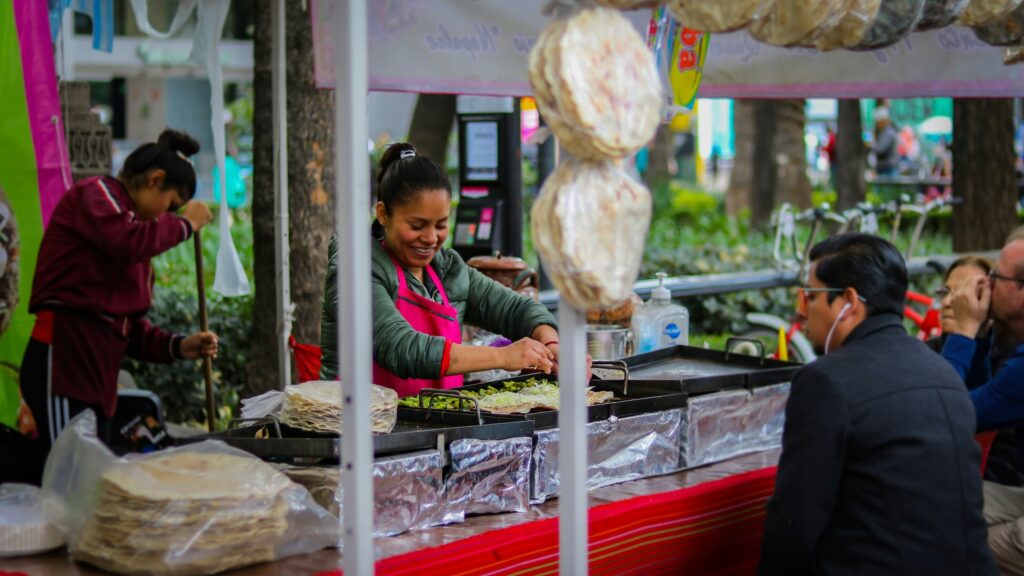
Philippine street cuisine is about enjoying the rich culture, vivid flavors, and varied history of the nation rather than only about eating. Every mouthful from sweet sweets to grilled skewers reveals a narrative. For visitors not familiar with local sites, investigating these food hotspots may be both thrilling and demanding. Here is where maintaining connectivity becomes absolutely crucial.
eSIM technology lets you easily identify the best food vendors and negotiate the busy streets. An eSIM, or digital SIM card, lets you remain connected without changing actual SIMs. Your phone with eSIM Philippines always allows you to use directions, translating applications, and internet reviews to simplify and enhance your street food adventure in the Philippines. Now that you’re ready, let’s explore the must-try street delicacies beloved by both residents and guests of the Philippines.
The Culture of Street Food in the Philippines
In the Philippines, daily life revolves around street cuisine in great part. Locals find it a quick and reasonably priced approach to have a meal or snack. Travelers have a chance to explore real Filipino tastes. From little roadside booths in rural areas to crowded metropolitan streets in Manila, street food sellers abound.
The way Filipino street cuisine draws people together defines its uniqueness. Parks, public markets, and transportation hubs are among the places where vendors frequently gather—where people hang out. It’s difficult to refuse as the food is fresh right before you. Furthermore, Filipino hospitality is excellent since sellers typically interact with clients to make you welcome.
Among the most well-known street food markets are Divisoria Market in Manila, Larsian BBQ in Cebu, and Roxas Night Market in Davao. These locations are about feeling the vibrant spirit of Filipino street culture, not only about dining.
Must-Try Street Foods in the Philippines
Isaw (Grilled Chicken or Pork Intestines)
Among the most often consumed street snacks in the Philippines is saw. It’s produced by marinating chicken or hog intestines in a blend of spices and vinegar then grilling them over hot coals. The end effect is smokey, tart, and somewhat crunchy.
Asaw sellers abound all throughout the nation, particularly in Manila and Quezon City. Usually, the dish is presented with sweet, hot sauces or a vinegar-based dipping sauce. Locals love it as a light dinner or snack along with rice.
Balut (Fertilized Duck Egg)
Perhaps the most well-known—and divisive—street meal available in the Philippines is balut Rich, savory taste is what makes this boiling fertilised duck egg—which has a half grown embryo—so appealing. Usually eaten with a dash of vinegar or salt, it’s
Although some find the concept intimidating, adventurous diners really should try balut. Particularly in places like Manila and Cebu, vendors prowl the streets at night calling “Balut!” to draw clients.
Kwek-Kwek (Fried Quail Eggs)
Made by coating quail eggs in vivid orange batter and deep-frying them till crispy, kwek-kwek is a vibrant and entertaining street snack. The soft, delicious egg within contrasts wonderfully with the crispy surface.
Usually presented with a selection of sauces, these could be a sweet-spicy blend or a tart vinegar dip. Almost every street food cart around the nation carries kwek-kwek, which is a simple snack to grab on-the-go.
Fish Balls, Squid Balls, and Kikiam
In Philippine street food scene, these bite-sized delicacies are classic. Deeply fried fish balls, squid balls, and kikiam—a meat roll modeled by Chinese cuisine—are presented on sticks.
The range of dipping sauces—sweet, spicy, or vinegar-based—that you can combine to fit your taste distinguishes them. At public parks, school gates, and crowded marketplaces, these snacks are mainstay items.
Taho (Sweet Silken Tofu)
Made with silken tofu, arnibal—caramel syrup, and sago pearls, taho is a warm, sweet dessert. Vendors calling out “Taho!,” carrying their buckets of ingredients, usually sell this consoling food in the morning.
Breakfast or a mid-morning snack would call for this dish. Particularly well-liked in parks like Rizal Park in Manila and residential areas is
Banana Cue and Camote Cue
Deep-frying saba bananas covered in caramelized sugar and skewering them on sticks produces a banana cue. Though it uses sweet potatoes instead, camote cue is a related recipe.
Both adults and children love these sweet, crispy munchies. Vendors offer them throughout the day at roadside stalls and public marketplaces.
Halo-Halo
A cool treat ideal for the tropical heat of the Philippines is halo-halo. Made with crushed ice, milk, and a range of sweet ingredients including beans, jellies, fruits, and leche flan (custard), it has
Seasonal food carts or specialist stores in cities like Cebu and Davao carry halo-halo. It’s not only good; it’s a visually striking pleasure.
Lechon Manok and Liempo (Grilled Chicken and Pork Belly)
Marinated meats cooked over charcoal include lechon manok, grilled chicken, and Liempo, grilled pork belly. The outcome is rich in taste, juicy, smoky.
Usually served with rice, these meals are ideal for a hurried lunch or dinner. Almost every town and city has street-side grills providing some of the best iterations of these classics.
Turon (Fried Banana Rolls)
Rolling saba bananas in sugar, then wrapping them in spring roll wrappers, turon is a delicious delicacy fried till golden brown.
Those with a sweet taste love it because of the caramelized banana within and crispy wrapper. Markets and roadside booths abound with turon.
Tips for Street Food Safety
Prioritizing safety can help you to guarantee a wonderful time while exploring street food. The following are some guidelines:
Stick to busy vendors: Long queues usually indicate that the food is fresh and trusted by the residents.
Check for cleanliness: Look for vendors that handle food with utensils and maintain their stations hygienic.
Start small: To ease into street food, start with basic meals if you have never had any.
Stay hydrated: Bring bottled water, particularly if you are eating fried or salted meals.
Carry essentials: For even more convenience, include tissues and hand sanitizer.
Why an eSIM is a Must for Exploring Filipino Street Food
Traveling in the Philippines and using an eSIM will greatly improve your street food encounter.
Discover outstanding suppliers: Use food apps and access maps to find highly recommended street food venues.
Translate words: Talk with sellers and translate food names using your eSIM connection.
Navigate effortlessly: Stay in touch without stressing about losing signal or swapping SIM cards.
An eSIM guarantees flawless connectivity so you can concentrate on savoring your dining trip.
Conclusion
In the Philippines, street food is an honoring of tastes, textures, and culture. From sweet sweets like turon and halo-halo to spicy skewers like isaw, every meal presents a different taste of Filipino culture.
Discovering these gastronomic gems becomes considerably simpler and more fun using an eSIM. So seize your hunger, go to the closest food market, and sink yourself into the mouthwatering realm of Filipino street cuisine. This is an unforgettable experience!
For More Updates and News Visit Us: Flywilla.com


